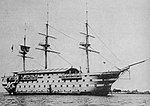1938 Curtis Cup
1938 in American sports1938 in sports in Massachusetts1938 in women's golfCurtis CupEvents in Essex County, Massachusetts ... and 7 more
Golf in MassachusettsManchester-by-the-Sea, MassachusettsSeptember 1938 sports eventsSports competitions in MassachusettsSports in Essex County, MassachusettsTourist attractions in Essex County, MassachusettsUse mdy dates from April 2022
The 4th Curtis Cup Match was played on September 7 and 8, 1938 at the Essex County Club in Manchester-by-the-Sea, Massachusetts. The United States won 51⁄2 to 31⁄2. Britain had led by 2 points after the foursomes but America won 5 of the 6 singles to win the match.
Excerpt from the Wikipedia article 1938 Curtis Cup (License: CC BY-SA 3.0, Authors).1938 Curtis Cup
School Street,
Geographical coordinates (GPS) Address Phone number Website Nearby Places Show on map
Geographical coordinates (GPS)
| Latitude | Longitude |
|---|---|
| N 42.585 ° | E -70.767 ° |
Address
Essex County Club
School Street 153
01944
Massachusetts, United States
Open on Google Maps






